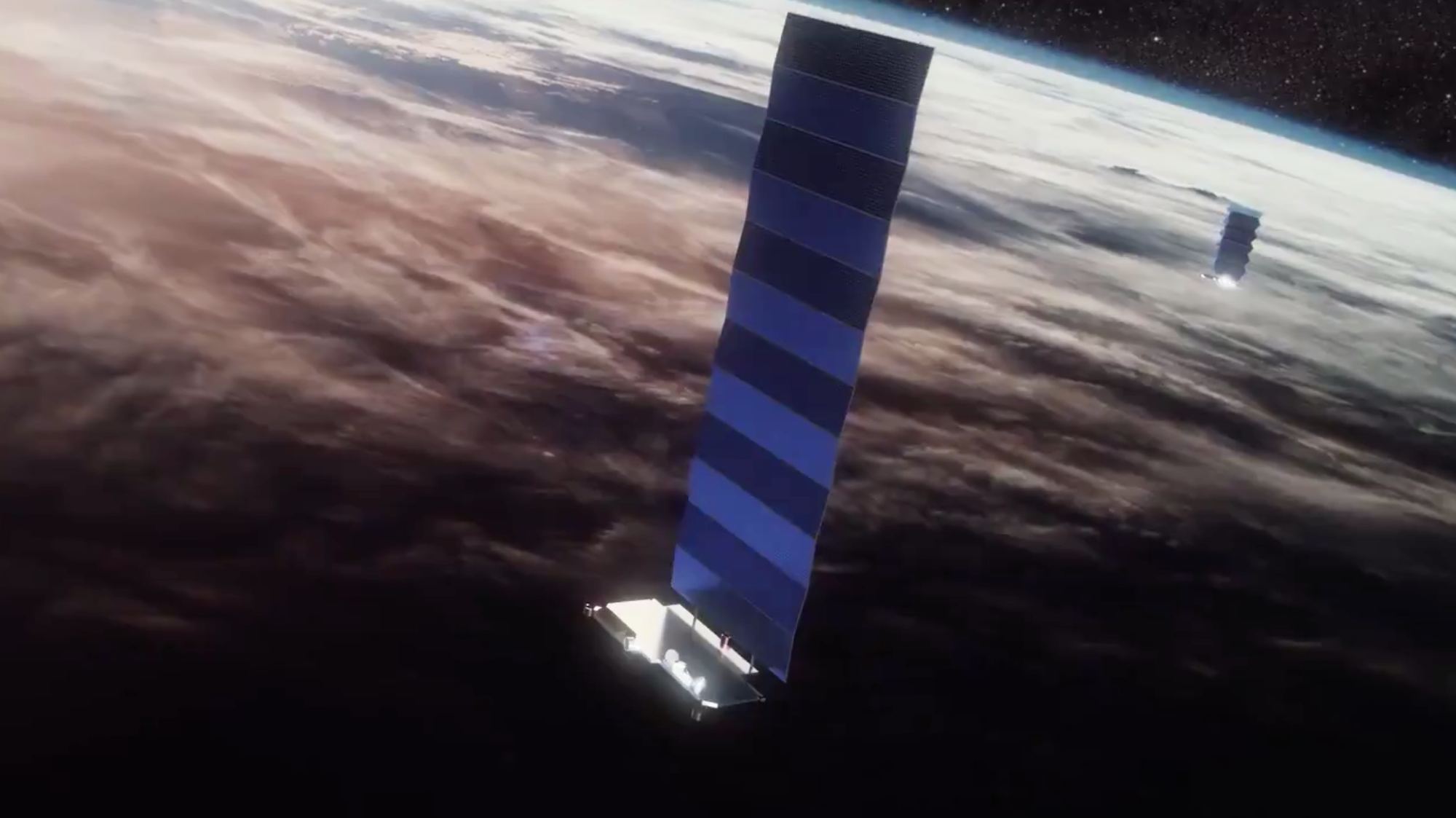NASA has given the go-ahead for SpaceX to work out a plan to adapt its Starlink broadband internet satellites for use in a Martian communication network.
The idea is one of a dozen proposals that have won NASA funding for concept studies that could end up supporting the space agency’s strategy for bringing samples from Mars back to Earth for lab analysis. The proposals were submitted by nine companies — also including Blue Origin, Lockheed Martin, United Launch Alliance, Astrobotic, Firefly Aerospace, Impulse Space, Albedo Space and Redwire Space.
Awardees will be paid $200,000 to $300,000 for their reports, which are due in August. NASA says the studies could lead to future requests for proposals, but it’s not yet making any commitment to follow up.
“We’re in an exciting new era of space exploration, with rapid growth of commercial interest and capabilities,” Eric Ianson, director of NASA’s Mars Exploration Program, said in a news release. “Now is the right time for NASA to begin looking at how public-private partnerships could support science at Mars in the coming decades.”
For years, SpaceX executives have been talking about using Starlink satellites in Martian orbit as part of billionaire founder Elon Musk’s vision of making humanity a multiplanetary species. In 2020, SpaceX President Gwynne Shotwell told Time magazine that connectivity will be an essential part of the company’s Mars settlement plan.
“Once we take people to Mars, they are going to need a capability to communicate,” she said. “In fact, I think it will be even more critical to have a constellation like Starlink around Mars. And then, of course, you need to connect the two planets as well — so, we need to make sure we have robust telecom between Mars and back in Earth.”
Musk delved into more detail during last October’s International Astronautical Congress in Azerbaijan. “For Mars, you’d want a laser relay system, essentially,” he said. “It depends on what bandwidth you’re looking for. … Ultimately, we’d want terabit, maybe petabit-level data transfer between Earth and Mars.” Check out his comments on YouTube:
Musk could capitalize on NASA’s need to upgrade its communication relay system at the Red Planet, which relies on satellites that are up to 23 years old. The space agency’s main focus for future Mars exploration is its multi-mission strategy to retrieve samples that have been cached by the Perseverance rover. Last month, NASA said it would rework that strategy to reduce costs, in part by taking advantage of innovations coming from private industry. The innovations that are now the focus of the Mars Exploration Commercial Services program could play prominent roles in the revised strategy.
Blue Origin, the space venture founded by Amazon billionaire Jeff Bezos, will look into adapting its Blue Ring transfer vehicle to host and deliver payloads heading for Mars. A separate study will focus on Blue Ring’s potential use for next-generation relay services. In a posting to X / Twitter, Blue Origin said it was “excited to be part of NASA’s studies around the future of Mars robotic science and the unique benefits our Blue Ring platform can provide by enabling large payload delivery, hosting, and next-gen relay services.”
Here are the other companies on NASA’s list, and the subjects of their studies:
- Albedo Space: How to adapt an imaging satellite originally meant for low Earth orbit to provide Mars surface imaging.
- Astrobotic Technology: How to modify a lunar-exploration spacecraft for large payload delivery and hosting services. Also, how to modify a lunar-exploration spacecraft for Mars surface imaging.
- Firefly Aerospace: How to adapt a lunar-exploration spacecraft for small payload delivery and hosting services.
- Impulse Space: How to adapt its Helios space tug to provide small payload delivery and hosting for Mars missions.
- Lockheed Martin: How to adapt a lunar-exploration spacecraft for small payload delivery and hosting. Also, how to provide communication relay services for Mars with a spacecraft originally meant for use in the vicinity of Earth and the moon.
- Redwire Space: How to modify a commercial imaging spacecraft originally meant for low Earth orbit to provide Mars surface-imaging services.
- United Launch Alliance (through United Launch Services): How to modify an Earth-vicinity cryogenic upper stage to provide large payload delivery and hosting services.


Yay! Martian explorers will now be able to send pics of their lunch back home.
SpaceX is easily the best qualified for this task. They build communications satellites by the thousands. They have the launcher in Falcon 9, but would prefer to use Starship to get a huge batch of sats to Mars. Radiation hardening is the only limitation I see to SpaceX using existing sats to do the job. They already have laser communications working, so just adapting this tech to be interplanetary should be relatively easy. With the pace of government, I wouldn’t be surprised if SpaceX launched Starlink to Mars without them.